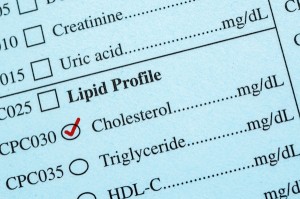Dyslipidemia & Metabolic Syndrome
 Metabolic syndrome is a combination of medical problems that can occur all at the same time. The problems can include:
Metabolic syndrome is a combination of medical problems that can occur all at the same time. The problems can include:
- Elevated blood pressure
- High blood sugar/insulin resistance
- Too much body fat around the waist
- High cholesterol
- Protein in the urine
This combination of conditions increases your risk for heart disease, stroke and diabetes. In general, people with metabolic syndrome have at least three of the conditions listed above, and the diagnosis must be made by a doctor. If you have just one of these problems, it doesn’t mean that you have metabolic syndrome.
Insulin Resistance
Insulin helps digested sugar, or glucose, to enter into your cells. Glucose outside of the cell can’t be used for proper cell function. In insulin resistance, your cells don’t respond normally to insulin, so the glucose remains in the blood outside of the cells. Your body tries to overcome this by making more insulin. If this goes on for too long, you can eventually develop diabetes.
Insulin resistance also can cause problems with elevated triglycerides which is a form of cholesterol. Finally, insulin resistance can cause damage to the kidneys and therefore lead to high blood pressure. All of these factors can also lead to an increased risk of heart disease.
Symptoms of Metabolic Syndrome
The symptoms of metabolic syndrome are associated with the components of the disorder. These are:
- Excess Body Fat (obesity): The body fat in this case is usually concentrated in the area around the waist. In general, this means a waistline that measures 40 in. or greater for men and 35 in. or greater for women. These numbers can differ depending on your race.
- High Blood Pressure: This means that your top blood pressure number (systolic) is 130 mm Hg or more or your bottom number (diastolic) is 85 mm Hg or more.
- Increased Blood Glucose Levels: When your fasting blood glucose is greater than or equal to 100 mg/dl.
- Elevated Cholesterol: This can be when your triglycerides are 150 mg/dl or more and when your “good” cholesterol (HDL) is less than 40 mg/dl in men and 50 mg/dl in women.
Causes of Metabolic Syndrome
The exact cause of this disorder is unknown as it involves a complex cluster of problems. Being older, sedentary and obese increase your risk for developing metabolic syndrome. There is evidence for a genetic component as well. Hispanics and Asians are also at increased risk. In women, polycystic ovary syndrome also increases risk the risk of developing metabolic syndrome.
There is a lot of debate in the medical community about whether obesity and insulin resistance are the causes of metabolic syndrome or the effects of a metabolic problem.
Diagnosing Metabolic Syndrome
Several different medical organizations offer various criteria from for diagnosing this disorder. In general the diagnosis is made based upon a physical exam and blood tests. Some of the tests or examinations are (see details in Symptoms section of this article):
- Waistline measurement
- Blood Cholesterol, specifically triglycerides and HDL (“good” cholesterol)
- Blood Pressure
- Fasting Blood Sugar
Treating Metabolic Syndrome
Treatment of metabolic syndrome requires close contact and communication with your doctor. The first step once the diagnosis is made is to implement healthy lifestyle changes. If these are adopted faithfully,it will improve your health significantly. It could also helpyou avoid the need to take medications. Your doctor will likely recommend:
- Regular exercise: Even just taking a brisk walk for 30 minutes or more per day makes a big difference. Make sure you consult with your physician before starting any exercise routine.
- Healthy Diet: A low salt and low fat diet will likely be recommended. A diet rich in fruits, vegetables, fish and whole grains is especially helpful. Your doctor might even recommend seeing a nutritionist to plan a diet just for you.
- Weight loss: Exercise and diet will help you lose weight. All of this greatly reduces your risk for developing diabetes, high blood pressure and heart disease.
- Quit smoking: If you smoke, you should quit right away. Cigarette smoking makes insulin resistance worse. Smoking cessation is one of the most important ways to reduce heart disease risk.
If in three to six months lifestyle modifications do not work, then your doctor might recommend medications to treat some of the problems associated with metabolic syndrome. Your physician will also monitor you closely to make sure you do not develop diabetes, high blood pressure or high cholesterol.
Conclusion
Metabolic syndrome is a complex combination of disorders that can increase your risk for diabetes, heart problems and stroke. It is important to diagnose this syndrome as early as possible and to adopt a healthy lifestyle as treatment and as prevention of further disease.


Recent Comments